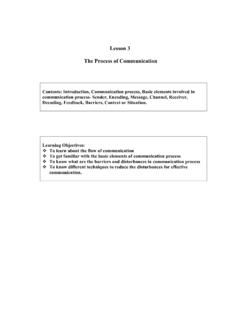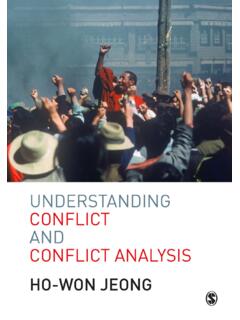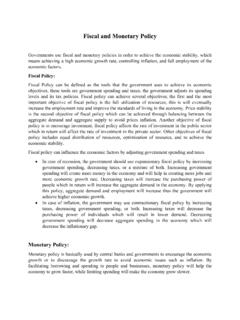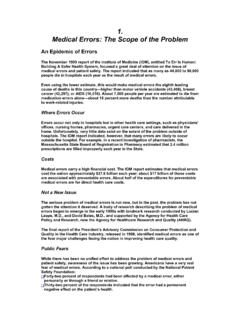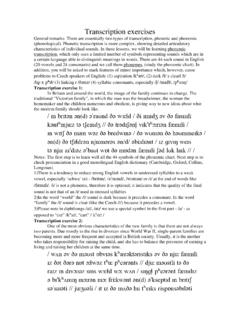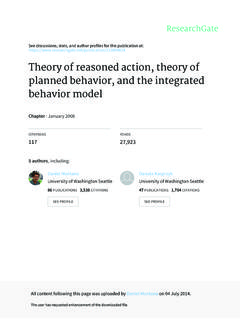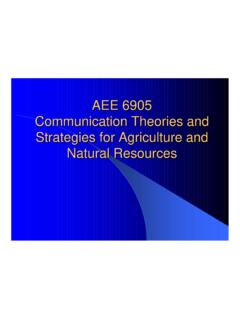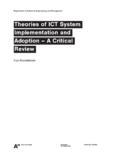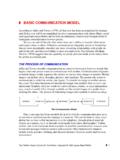Transcription of Lesson 8 Communication Models - Masarykova univerzita
1 Lesson 8 Communication Models Contents: Introduction- why do we need to study Communication Models ? What are the basic Models of Communication , Aristotle s model and Laswell model of Communication . Learning Objectives: To understand the flow of Communication with help of different Models . To understand the three basic concepts of Aristotle s model . To understand basic concepts of Lasswell s model . Introduction: Technically Communication is a process where a sender sends the message to a receiver through the various channels and with the same or the other channel sender gets the feedback from receiver. In our previous lessons we learned about the different types of Communication , , intrapersonal, interpersonal, group and mass Communication . Each type of Communication includes few basic elements namely- sender, receiver, message, channel, feedback and barrier.
2 To simplify and understand the process of Communication different Models are interpreted. A model is a representation of real world phenomenon in more abstract terms, which can be applied to different forms. Students of Communication often use Models to try to present a simplified version of Communication , containing the essential 'ingredients' only. With a bit of luck, these Models should help us to tease out the factors, which are common to all forms of Communication . Communication theory Models offer a convenient way to think about Communication , providing a graphical checklist, which one can use to create anything from a speech to a major advertising campaign. Communication Models are visualizations of Communication process. They are basic theories concerning the elements of Communication and how they operate and interact. 3 basic components that are part of all Communication Models : SOURCE MESSAGE RECEIVER S ---------> M --------> R (linear) Aristotle s model of Communication Formal Communication theory (rhetorical theory) goes back 2500 years ago to Classical Greece when Plato, Aristotle, and the Sophists were speech teachers.
3 Classical Rhetoric . Early Greek society (Plato, Aristotle) began the study of Communication . The social context, the society's structure leads to a certain picture of Communication . The study of Communication in Greek society was called RHETORIC, and this was how Greek philosophers thought about Communication . Most politics then were based on the oral tradition, you had to defend yourself before a court of law, and nothing was really written. Public speaking was the basis of society and effective public speaking was important. The word SOPHIST (or applied communicator) comes from these times. These were clever people who were very effective debaters (nowadays it means someone who can trick you in a debate, someone sophisticated). The Greek tradition was continued and improved upon by the Romans, after which it remained static until the twentieth century. Indeed, Classical Rhetoric was and still is being taught today.
4 However, as a result of the proliferation of mass communications via radio, movies, and television, and of empirical scientific methods, Communication theory changed in the latter part of the twentieth century. The model proposed by Aristotle is a linear one. In his Rhetoric, Aristotle tells us that we must consider three elements in Communication : The speaker The speech The audience This is a model that focuses principally on public speaking; we will turn next to explore the Rhetorical Situation. This model will also provide a basis for judging how effectively a speaker responds to the requirements of a speaking situation. Aristotle s model has a Speaker, so the emphasis is on personal debate. Rhetoric or persuasive Communication is based on the Greek model . Many Models and theories of Communication stem from this early one. If you just think for a moment about the variety of Communication acts, you shouldn't have too much difficulty seeing those elements.
5 In some cases, of course, Aristotle's vocabulary doesn't quite fit. In the example of you reading the newspaper, no one is actually 'speaking' as such, but if we use, say, the terms 'writer' and 'text', then Aristotle's elements can still be found. The Audience includes those who are listening to your speech. Yet, not all audiences are the same. An astute speaker will carefully assess the nature of the audience at hand to determine the best ways to address the audience. In thinking about the audience who will be listening to your speech, consider some of the following audience demographics: age sex family affiliation sexual orientation cultural diversity racial background economic and social standing political identification religious or philosophical orientation Depending on who makes up your audience, you will select and shape your topic. To be responsive to the unique audience gathered for your speech you will need to take into account how your audience is predisposed on an emotional and psychological level to respond to you or your topic.
6 It is also meaningful to consider the attitudes, beliefs and values of the audience that constitute the frame of reference members of the audience bring to the situation: An attitude is the predisposition to respond favorably or unfavorably toward a topic. A belief is a position or standard that audience members hold as valid or truthful. A value is a deeply seated attitude commonly rooted in core beliefs, usually about the intrinsic worth of something. Aristotle speaks of a Communication process composed of a speaker, a message and a listener. Note, he points out that the person at the end of the Communication process holds the key to whether or not Communication takes place. Our failure to recognize what Aristotle grasped thousands of years ago is a primary cause, if not the primary one, for Communication failure. We fail to recognize the importance of the audience at the end of the Communication chain.
7 We tend to be more concerned about ourselves as the communications source, about our message, and even the channel we are going to use. Too often, the listener, viewer, reader fails to get any consideration at all. Aristotle's words underscore the long interest in Communication . They also indicate that man has had a good grasp of what is involved in Communication for a long while. So we might even wonder: If we know so much about the Communication process, and if we've known it for so long, why do we still have communications problems? It's unlikely we will ever achieve perfect Communication . The best we can hope for is to provide improved Communication . Hopefully, we'll be more aware of the process and work harder to minimize problems with communications. Lasswell s model (1948) Harold Lasswell a political scientist studied very carefully the American presidential Elections (1948). Based on his studies on the process of political campaigning and propagandas he introduced an important model , elements of which survive in more developed modern Models .
8 Who Says What In Which Channel To Whom To What Effect As we see, Lasswell s Communication model is similar to the other Models we will discuss. The "Who" is the "Source;" "Says What", the message; and "To Whom", the destination. Communications have a source that communicates a message through a channel or medium to a destination (audience) that, hopefully, creates the desired effect. Claude Shannon's model is similar, but more graphical. Main characteristics of the model are: It is based on effect of the sender s message on receiver. There is no feedback for the message. It is very linear in nature (researchers say Communication is always in circular motion because of feedback element) It presents Communication as more of persuasive process rather than an informative. Lasswell s model sees Communication as the transmission of messages: it raises the issue of effect rather than meaning.
9 Effect implies an observable and measurable change in the receiver that is caused by identifiable elements in the process. Changing one of these elements will change the effect: we change the sender, we change the message, we change the channel: each one of these changes should produce the appropriate change in the effect. Lasswell s was primarily concerned with mass Communication . In every form of Communication , though, there must be someone (or something) that communicates. Being concerned with the mass media, Lasswell was particularly concerned with the messages present in the media. This relates to an area of study known as content research. Typically, content research is applied to questions of representation, for example: how are women represented in the tabloid press? or: how are blacks represented on television? Or: how is our society represented to us in the movies? Content research will often be a matter of counting the number of occurrences of a particular representation (for example, the housewife and mother who does not work outside the home) and comparing that with some kind of 'objective' measure, such as official statistics.
10 One of the earliest attempts to describe the Communication process was Harold Lasswell's "Who says what to whom with what effect." (Given our definition of Communication and the General Systems Theory, can you identify weakness in this model ?). Lasswell was attempting to describe his observations about the process and effect of newspapers on readers. The newspaper reporter or editor is the "who," the story content is the "says what." The format and form of the newspaper item is the "in what way." The "to whom" is the reader and the "with what effect" refers to actions motivated in the reader from exposure to the newspaper item. Some people might say this model doesn't include any provision for feedback to determine the degree of understanding achieved in the process, an important component of our definition. Think about this a minute. If someone were to stop you in the parking lot and ask you directions to the nearest restaurant, you might say, "Go down this street to the traffic light.
